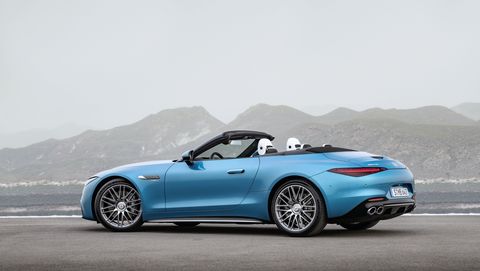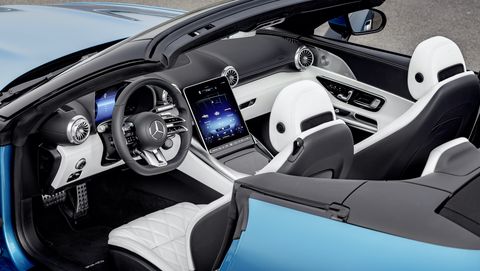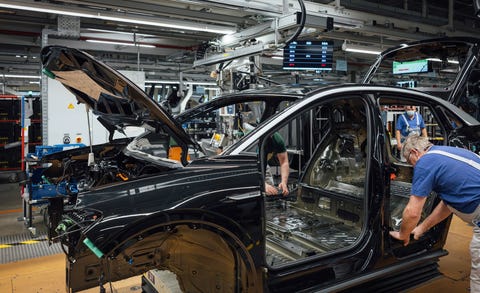Vehicles 136
Honda developing three new electric vehicle platforms by 2030 -executive
April 21 (Reuters) – Honda Motor Co (7267.T) plans to build millions of electric vehicles (EV) by 2030 using three new dedicated platforms, with one to be jointly developed with U.S. partner General Motors Co (GM.N), a top executive at the Japanese automaker said.
Shinji Aoyama, Honda’s global head of electrification, told Reuters on Thursday the firm will introduce an electric mini commercial vehicle in Japan in 2024, built on a new small EV platform. This will be followed by full-size electric model in North America in 2026, on a new large platform.
Both platforms will be used for other models.
Speaking in a video call, Aoyama said a third platform, which he described as “medium size”, will be shared with General Motors, starting in 2027.
The two companies in early April said they would jointly develop “affordable electric vehicles” for global markets, but released few other details.
“Whether they will be based on Honda’s architecture or on GM’s platform has not been decided,” Aoyama said.
“We have not decided which plants (or) what will be produced,” he added. “But we are going to share the bill of process” for manufacturing “to enable the cars to be produced at either” Honda or GM plants.
GM is building two premium electric SUVs for Honda in North America, starting in 2024, based on the dedicated EV platform that underpins GM’s Cadillac Lyriq.
Aoyama said Honda has agreed to use GM’s next-generation Ultium battery, though the specifications have not been finalized. But the Japanese automaker has no plans to participate in GM’s Ultium battery joint venture with South Korea’s LG Energy Solution (051910.KS), he said.
Honda has said it plans to build two million electric vehicles globally by 2030, including the mid-size models being developed with GM.
Aoyoma said Honda is targeting North American production of 750,000-800,000 electric vehicles in 2030, and about the same in China, with another 400,000-500,000 in Japan and other markets.
Mercedes-AMG SL43 Has a 389-HP Turbo-Four with F1 Tech
- The Mercedes-AMG SL43 is an entry-level model for the latest generation of the SL. It is powered by a 389-horsepower turbocharged inline-four.
- This is the first production vehicle to feature a turbo with an electric motor on the turbocharger shaft that can spin the compressor wheel to reduce lag and maintain boost pressure when the driver lets off the gas pedal.
- Mercedes is still deciding whether it wants to bring the four-cylinder SL43 to the United States market.
The new Mercedes-AMG SL43 may be the entry-level model in the grand tourer’s lineup, but that doesn’t mean the SL43 is basic. While it has only half as many cylinders as its higher-performance, V-8-powered SL55 and SL63 siblings, this model has technology derived from Formula 1 that promises increased responsiveness from the turbocharged inline-four.

The SL43’s party piece is a turbocharger with an electric motor plus the typical exhaust-gas plumbing. This production-car first is fitted to the M139 2.0-liter inline-four, the same engine found in the CLA45 and GLA45 AMG models. The motor is only about an inch and a half thick and mounted on the shaft between the turbine wheel and compressor wheel. The whole point is that this motor can spin the compressor wheel before the exhaust gases do, reducing turbo lag, providing a near-immediate response when the driver pins the throttle, and maintaining boost pressure even when the driver lets off the gas or hits the brakes. This same technology is found in the turbocharged 1.6-liter V-6 hybrids used by the Mercedes-AMG Formula 1 team.

2023 Toyota GR Corolla, Explained by Its Chief Engineer: ‘Americans Demand Power’
At the reveal of the 2023 Toyota GR Corolla, we grabbed a few minutes with Toyota’s chief engineer on the project, Naoyuki Sakamoto, to dig into some of the challenges in developing the car, and what he thinks makes it so capable on track.
C/D: Everyone here in the States was so jealous of the Yaris GR. How soon after Yaris did the team start the GR Corolla?
NS: Actually, we started to develop the GR Corolla in 2018. So before Yaris, we were working on it. I’d say almost the same time we are developing both cars.
The GR Corolla uses a three-cylinder engine. Was that designed for Yaris and adapted, or planned for Corolla originally?
The Corolla is using the Yaris engine, but to bring it to the U.S. market we thought we’d need more power, so we started modifications to make that possible. Americans demand power.
We are like that. If horsepower was a goal, why stick with the three-cylinder? Wouldn’t it have been easier to turbocharge a four cylinder?
Actually, the compact engine is right for a sports car. The more you can keep heavy parts close to the center of gravity, the better it handles, so a lighter engine is better. A lighter car is better.
So to make more power, what did you do? You didn’t bore or stroke it, it’s the same size as the Yaris’s engine, but what, 30 more horses? And a three-cylinder needs a balance shaft, right? And this is twin-cam?
Yeah, 300, up from 268 hp. We increased the boost, and to do that, we needed to reduce the backpressure. We needed to move more fuel in, more exhaust gas out, and it creates a high backpressure. And yes, a balance shaft, and twin-cam, of course.
How do you keep everything cool?
We did so much testing on track, in summer, in winter. We opened up the grille, you can see, it’s huge compared to a stock Corolla. Vents to direct air through. Even the intake, we have a thin intake for slow speed, to move air through quickly, and another duct below that opens at higher rpm, to bring more air into the engine.
Russia Could Nationalize Automaker Assets as Ukraine Invasion Continues, and VW ID.5 Launch Delayed
- Following almost two years of supply-chain problems, Russia’s invasion of Ukraine is causing more problems for automakers in Europe in addition to the terrible human toll the invasion is taking.
- Ukraine, it turns out, supplies a lot of wiring harnesses, and now the launch of the Europe-market VW ID.5 EV (pictured above) is delayed because of a shortage.
- Renault, which controls Russia’s largest automaker, suspended operations in the country this week, leading once again to questions about whether the Russian government will simply take control of factories and other assets Western automakers are walking away from.
Russia’s invasion of Ukraine continues to disrupt life well outside the active fighting areas. In the automotive world, European automakers have been forced to reduce production or even delay new models because, as we’ve all learned so well in the past two years, functioning supply chains are not exactly a given.

When the invasion started, the fact that Ukraine supplies a large amount of wiring harnesses to European automakers suddenly became important. Volkswagen said this week that it will push back the launch of the ID.5 by a month because it cannot get enough harnesses to send demonstration vehicles to dealers in Germany. The ID.5 is an SUV “coupe” version of the ID.4 and was supposed to launch in Europe in April. The launch is now scheduled to happen in the first week of May, a VW spokesperson told Automotive News. That’s if enough wiring harnesses can be acquired.
Automakers with partnerships or assets in Russia are being massively affected as well, most notably Renault. AvtoVaz is the largest automaker in Russia, but it’s controlled by French carmaker Renault, which has a 69 percent stake. This week, after plenty of outside pressure, Renault decided to suspend its operations in Russia, saying on Twitter that it is “acting responsibly towards our 45,000 employees in the country” and that the company has “already implemented the necessary measures to comply with international sanctions” before the suspension started.
Lada was forced to stop building cars earlier this month, a big step for a brand that sold 21 percent of all new vehicles in Russia in 2021. With Renault having taken at least the first step towards exiting the company, it brings up a larger question of what happens next. President Vladimir Putin is considering nationalizing the manufacturing plants and other assets global automakers have in Russia, as Automotive News and others have reported. Aside from Renault, Volkswagen, Stellantis, Ford and Mercedes-Benz would be the automakers most affected by any move to nationalize assets, a move sometimes described by Russian government officials as “external administration.”
“If foreign owners close the company unreasonably, then in such cases the government proposes to introduce external administration,” Russian Prime Minister Mikhail Mishustin told CNN earlier this month. “Depending on the decision of the owner, it will determine the future fate of the enterprise.”
2008 Mercedes-Benz C63 AMG Is Our Bring a Trailer Auction Pick of the Day
• A 2008 Mercedes-Benz C63 AMG, powered by the wondrous M156 6.2-liter V-8, is our Bring a Trailer pick of the day with an online auction that ends on Saturday, March 26.
• This was the first AMG engine designed from the ground up by the automaker’s go-fast division, and this era of AMG also represented a renewed focus on handling.
• With V-8s on the continual decline among new cars, now’s the time to hang on to one of the greats.
Seeing this third-generation W204 C63 AMG on BaT instantly transported me back to the fall of 2007 where I was terrorizing the roads of southern Germany in one of these as part of a very fast comparison test against the BMW M3 and Audi RS4. There was one out-of-the-way spot on an unlimited section of autobahn where the photographer wanted to do high-speed panning shots (or maybe just wanted to give us lifelong memories, because as I’m flipping back through the story now, I see none of those were used). We indulged with pass after pass, accelerating up to 150-plus mph then going down to the next exit, looping around, and repeating at least a half-dozen times. Even when not driving the Mercedes, I clearly remember how the sound of the AMG’s wailing V-8 could still hijack the cabin of the Audi or BMW.
The M156 engine is a monster of a naturally aspirated 6.2-liter V-8, the first engine developed from the ground up by the AMG division and not adapted from a lesser Mercedes powerplant; it appeared throughout the AMG lineup of the 2000s. At 3.9 seconds to 60 mph and 12.3 seconds in the quarter-mile, that 451-hp C63 was the quickest of the group by a significant margin. Even more than a decade later, it’s only a couple tenths off the pace of the most recent twin-turbo-V-8 C63, and it beats it in the rolling-start, 5-to-60-mph metric. Although it finished second to the monumental E90 M3, I’ve wanted to own an AMG with the 6.2-liter V-8 ever since.
The M156-powered AMGs have been quite affordable, too, with this particular car a low-mile example that appears to have been extremely well cared for. Bidding is currently at $34,000 with two days to go and, based on past results, might not get to $40K. Try to find an E90 M3 in equivalent condition for that price.

But as overwhelmingly awesome as the 6.2-liter is, one of the best things about this era of AMG was a return to handling prowess in addition to straight-line speed. The C63 had a reworked front suspension with a 1.4-inch-wider track that helped it handle almost as well as it accelerated, although the downside was the worst ride quality of the group. It also could be had only with a seven-speed automatic, although it was so responsive to paddle inputs and shifted so quickly we called it “the world’s best automatic” in that comparison test.
The fact that naturally aspirated V-8s, and V-8s in general, are headed for extinction make hanging on to one that much more desirable. This is a lot of car—and a lot of engine—for the money.
2023 Maserati Grecale Looks Sporty and Packs up to 523 HP
- The 2023 Maserati Grecale is a new crossover model that’s smaller than the Levante.
- It will come with either a turbo four-cylinder, a twin-turbo V-6, or an electric powertrain.
- The Grecale will go on sale in the U.S. this summer, with the electric Folgore model following a year later.
By now we’ve all gotten used to the idea that Maserati sells sedans and SUVs, but how about a Maserati compact crossover with a four-cylinder engine? The new 2023 Grecale brings the Maserati lineup even further downmarket into the luxury SUV sphere currently occupied by models such as the Porsche Macan and Alfa Romeo Stelvio. Given that the mid-size Levante SUV makes up nearly 60 percent of Maserati sales globally, a smaller sibling was all but inevitable.
At 190.8 inches long with a 114.2-inch wheelbase, the Grecale is a bit larger than the Stelvio and Macan but has similar proportions, with a rounded greenhouse and a relatively low nose. Its grille shape and vertically oriented headlights reference the mid-engine MC20 supercar’s and represent Maserati’s latest design language that’s distinct from what we see on the older Levante, Ghibli, and Quattroporte models.
The Grecale lineup will include three gas-powered offerings at first, along with an electric variant called the Folgore coming next year that we’ve covered separately. The base GT spec comes with a turbocharged 2.0-liter inline-four and a 48-volt hybrid system that makes 296 horsepower and 332 pound-feet of torque. The Modena has a slightly more powerful version of this engine with 325 horsepower. And the top-dog Trofeo has a detuned version of the twin-turbocharged 3.0-liter V-6 from the MC20 that features the same pre-chamber ignition system. In this application, it makes 523 horsepower and 457 pound-feet of torque, versus the MC20’s 621 hp and 538 pound-feet.
Maserati claims the four-cylinder models will get to 60 mph in the low-5.0-second range, while the Trofeo is clearly aiming for the Porsche Macan GTS, BMW X3 M, and other performance SUVs with its claimed run to 60 mph in 3.6 seconds and top speed of 177 mph. An eight-speed automatic transmission and all-wheel drive are standard across the board. An air suspension and adaptive dampers are optional on the four-cylinder variants and standard on the Trofeo. The performance model also gets 21-inch wheels and upgraded brakes, and both the Modena and Trofeo’s rear tires are wider than their fronts.
Maserati claims the four-cylinder models will get to 60 mph in the low-5.0-second range, while the Trofeo is clearly aiming for the Porsche Macan GTS, BMW X3 M, and other performance SUVs with its claimed run to 60 mph in 3.6 seconds and top speed of 177 mph. An eight-speed automatic transmission and all-wheel drive are standard across the board. An air suspension and adaptive dampers are optional on the four-cylinder variants and standard on the Trofeo. The performance model also gets 21-inch wheels and upgraded brakes, and both the Modena and Trofeo’s rear tires are wider than their fronts.
The Grecale’s interior is more screen-heavy than any Maserati we’ve seen before. Both the digital gauge cluster and central infotainment screens measure 12.3 inches, and there’s also a smaller 8.8-inch touchscreen lower on the dash that controls various climate and vehicle functions. Even the clock on top of the dash is digital, although its display mimics an analog watch face. Various interior trim options include open-pore wood, gloss-black inserts, and contrasting stitching, while the Trofeo has carbon-fiber trim and a different pattern for the leather upholstery.
Maserati has priced the Grecale ambitiously, as it starts at $64,995 for the base GT model, significantly more than the $56,250 base Macan. A Modena Limited Edition will be available for reservations first, starting at $78,895. Pricing for the Trofeo is not yet available but it will likely start above $80,000. The Grecale will go on sale in the U.S. this summer.
Categories
- Breaking News (148)
- buisness (21)
- Entertainment (108)
- Box Office (13)
- Gaming (10)
- Marvel (MCU) (8)
- Movies (24)
- DC (DCU) (3)
- Netflix Series (2)
- Series (6)
- Enviornment (8)
- Fashion (96)
- Men's Fashion (3)
- Women's Style (3)
- Food (13)
- Health & Fitness (9)
- History (1)
- Hollywood Gossip (3)
- Home & Garden (3)
- International News (116)
- Lifehacks (21)
- Literature (30)
- Local News (75)
- Modeling (1)
- Music (8)
- Politics (10)
- Science (37)
- Psychology (2)
- Social (3)
- Sports (106)
- Technology (31)
- Traveling (70)
- Uncategorized (64)
- Vehicles (136)
Ask Your Problems
-
About Leasing
7 years, 2 months ago
-
About Vehicles
7 years, 2 months ago












Most commented